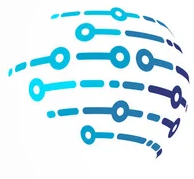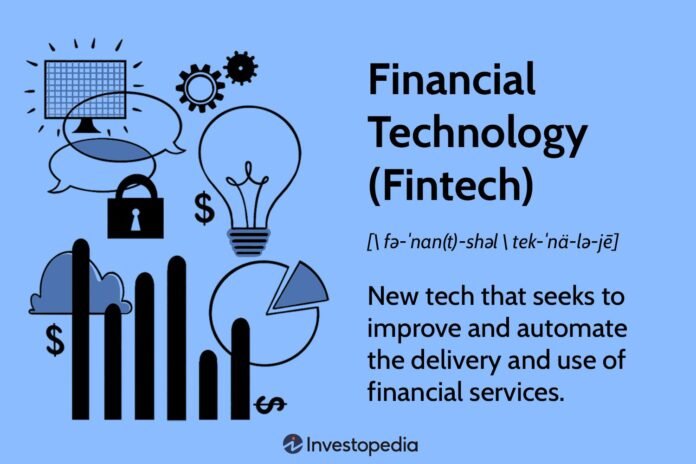What Is Financial Technology (Fintech)?
Financial technology, commonly referred to as fintech, is transforming the landscape of financial services. At its core, fintech enables businesses, entrepreneurs, and consumers to manage their financial activities more efficiently through innovative software and algorithms accessible via computers and smartphones. Initially, fintech focused on backend technologies for financial institutions in the early 21st century. However, it has since evolved into a consumer-centric model, impacting various sectors such as retail banking, education, investment management, and the rapidly growing cryptocurrency market. This evolution underscores fintech’s versatility and its significant influence on both traditional financial systems and everyday financial interactions.
Key Takeaways
- Definition: Fintech enhances and automates financial services, aiding users in managing financial operations efficiently.
- Expansion: Originally focused on backend solutions, fintech now encompasses consumer services across multiple sectors.
- Disruption: Fintech startups often challenge traditional financial service providers by offering faster, more accessible alternatives, particularly for underserved segments.
- Emerging Technologies: Innovations like AI and machine learning streamline decision-making and improve services such as fraud detection and customer support.
- Regulatory Scrutiny: Despite its rapid growth, fintech faces significant regulatory challenges, particularly concerning data privacy and cryptocurrency regulations.
Navigating the Basics of Fintech
The term "financial technology" encompasses any innovation in how people conduct business transactions, ranging from digital currencies to double-entry bookkeeping. Since the internet revolution, fintech has experienced explosive growth. Many individuals engage with fintech daily, whether it’s transferring money between accounts, sending cash via apps like Venmo, or managing investments through online platforms. According to EY’s 2019 Global FinTech Adoption Index, two-thirds of consumers utilize multiple fintech services, highlighting its integration into daily life.
Real-World Applications of Fintech
Fintech startups are designed to disrupt traditional financial providers by being more agile and catering to underserved populations. For instance, Affirm aims to eliminate credit card companies from the online shopping process by providing immediate, short-term loans for purchases. While interest rates can be high, Affirm offers a pathway for consumers with poor or no credit to build their credit history.
Similarly, Better Mortgage streamlines the home mortgage process with a digital-only platform that can provide users with a verified pre-approval letter within 24 hours. GreenSky connects home improvement borrowers with banks, helping consumers avoid lenders and save on interest through zero-interest promotional periods. For those in developing countries, Tala offers microloans by analyzing smartphone transaction histories, providing better options than local banks or unregulated lenders.
If you’ve ever found financial tasks like applying for a mortgage tedious, fintech likely has or is developing a more efficient solution.
The Growing Influence of Fintech Across Industries
Fintech simplifies financial services into individual offerings, enhancing transaction efficiency and reducing costs. The term "disruption" aptly describes how fintech innovations have reshaped traditional banking, trading, and financial advice. Services once confined to physical branches and desktops are now predominantly available on mobile devices.
For example, Robinhood, a mobile-only stock trading app, charges no fees for trades, while peer-to-peer (P2P) lending platforms like LendingClub promise to lower rates by fostering competition in the loan market. Business loan providers such as Kabbage and Funding Circle offer startups and established businesses quick access to working capital. The shift to a digital-first mindset has prompted traditional institutions to invest heavily in similar products, as seen with Goldman Sachs launching its consumer lending platform, Marcus.
However, industry experts caution that keeping pace with fintech innovations requires more than just increased tech spending; it necessitates a fundamental shift in thinking, processes, and corporate structures.
How Emerging Technologies Empower Fintech
Emerging technologies like machine learning, artificial intelligence (AI), and predictive analytics are revolutionizing financial decision-making. These "learning" apps not only analyze user habits but also engage users in educational games to improve their spending and saving behaviors.
Fintech also embraces automated customer service technologies, utilizing chatbots and AI interfaces to assist customers with basic tasks while minimizing staffing costs. Additionally, fintech leverages historical payment data to combat fraud by flagging unusual transactions.
The Fintech Ecosystem: Overview and Insights
Since the mid-2010s, fintech has surged, with startups attracting billions in venture funding, some achieving unicorn status. North America leads in fintech innovation, followed closely by Asia and Europe. Key areas of fintech innovation include:
- Cryptocurrency: Digital currencies like Bitcoin and Ethereum, often utilizing blockchain technology for secure transactions.
- Open Banking: A concept allowing consumers to access their bank data to create interconnected financial applications.
- Insurtech: Technology aimed at simplifying and streamlining the insurance industry.
- Regtech: Solutions designed to help financial firms comply with regulations, particularly concerning anti-money laundering and customer verification.
- Robo-Advisors: Automated investment platforms that lower costs and increase accessibility to investment advice.
- Unbanked Services: Solutions targeting low-income individuals who lack access to traditional banking services, promoting financial inclusion.
- Cybersecurity: As cybercrime rises, fintech and cybersecurity are increasingly intertwined, necessitating robust security measures.
Who Benefits from Fintech? A Look at Key Users
Fintech serves four primary user categories:
- Consumers: Younger generations, particularly Gen Z and millennials, are more likely to engage with fintech services, given their rising earning potential.
- Businesses: Fintech has streamlined processes for securing financing and accepting payments, eliminating traditional barriers.
- Investors: Fintech platforms provide easier access to investment opportunities, democratizing wealth-building.
- Financial Institutions: Traditional banks and financial firms leverage fintech innovations to enhance their offerings and compete effectively.
The trends toward mobile banking, increased data accessibility, and improved analytics are creating unprecedented opportunities for these user groups to interact.
Navigating the Regulatory Landscape in Fintech
As fintech grows, regulation becomes a significant concern for governments. The U.S. Department of the Treasury has noted that while fintech creates new opportunities, it also introduces new risks, particularly regarding data privacy and regulatory compliance. The rise of cryptocurrencies has further complicated the regulatory landscape, with initial coin offerings (ICOs) often operating in a gray area, leading to potential scams and fraud.
Given the diversity of fintech offerings, formulating a comprehensive regulatory approach is challenging. Governments typically adapt existing regulations or create tailored frameworks to address these issues.
Examples of Fintech
Fintech has permeated various financial sectors, including:
- Robo-Advisors: Platforms that automate investment strategies for minimal fees.
- Investment Apps: Services like Robinhood that facilitate easy trading of stocks and cryptocurrencies.
- Payment Apps: Solutions such as PayPal and Venmo that simplify online transactions.
- Personal Finance Apps: Tools like Mint that help users manage budgets and track expenses.
- P2P Lending Platforms: Services that connect borrowers with individual lenders.
- Crypto Apps: Wallets and exchanges for managing digital currencies.
- Insurtech: Innovations that enhance the insurance sector, such as usage-based auto insurance.
Does Fintech Apply Only to Banking?
No, fintech extends beyond banking. While many fintech applications focus on banking services, there are numerous areas related to personal finance, investing, and payments that have gained popularity.
How Do Fintech Companies Make Money?
Fintech companies generate revenue through various means, depending on their focus. Banking fintechs may earn from fees, loan interest, and financial product sales. Investment apps might charge brokerage fees or collect a percentage of assets under management. Payment apps often earn interest on cash balances and charge for premium features.

